By Toby Czarny

Birds are a keystone species within ecosystems around the world, being key actors in feeding networks in various environments. Since 1970, there has been a dramatic decline of avian species, with a net loss of ~3 billion birds in North America, largely due to human influence1. One of major contributors to bird fatalities is something we all have, which may not appear dangerous on first glance: windows.2 These seemingly ordinary and aesthetically-pleasing architectural components are not visible to birds, and so many mistakenly collide with windows during flight, in a process referred to as window strikes. When flying through urban environments, vast window panes dominate the aerial landscape3. In Canada, it is estimated that up to 25 million birds lose their lives to window collisions each year4, and these figures are even higher in the United States, where collision estimates average to be ~600 million5. As long as ordinary flat glass continues to dominate window infrastructure, virtually all migratory birds are at risk of window strikes5. However, simple changes in our lifestyles and understanding of urban design have the power to save millions of birds a year. Ultimately, if we want to create a world where birds are safe from window strikes, we must rethink windows as an infrastructural unit altogether. The first step to achieving this goal comes from YOU – through applying insignificant modifications to windows, namely through the implementation of translucent decals or markings on panes. These decals are not expensive nor inconvenient, and they can truly save lives. Once birds observe these images or patterns on windows the risk of collision is significantly diminished2. Such a simple lifestyle modification seems a little price to pay for the safety of one of the animal kingdom’s backbones. Through collective action, Guelph can become the voice of change, paving a culture of respect towards animal welfare.
References:
- Rosenberg, K. V., Dokter, A. M., Blancher, P. J., Sauer, J. R., Smith, A. C., Smith, P. A., … Marra, P. P. (2019). Decline of the North American avifauna. Science, 366(6461), 120–124. https://doi.org/10.1126/science.aaw1313
- Klem, D. (2015). Bird–window collisions: A critical animal welfare and conservation issue. Journal of Applied Animal Welfare Science, 18, S11–S17. https://doi.org/10.1080/10888705.2015.1075832
- Sabo, A. M., Hagemeyer, N. D. G., Lahey, A. S., & Walters, E. L. (2016). Local avian density influences risk of mortality from window strikes. PeerJ, 2016(6), 1–15. https://doi.org/10.7717/peerj.2170
- Machtans, C. S., Wedeles, C. H. R., & Bayne, E. M. (2013). A First Estimate for Canada of the Number of Birds Killed by Colliding with Building. Avian Conservation and Ecology, 8(2), 1–15.
- Loss, S. R., Will, T., Loss, S. S., & Marra, P. P. (2014). Bird–building collisions in the United States: Estimates of annual mortality and species vulnerability. The Condor, 116(1), 8–23. https://doi.org/10.1650/condor-13-090.1


This is great! Windows and cats take far too many birds. Could giving scrunches to cat owners (apparently making cats less likely to creep up on birds unnoticed) be cheaper for the next round?
LikeLiked by 1 person
Hi Sheila! We would love to expand our initiative to give out colourful cat collars, and are looking to do so in the future. In the meantime, if anyone wants to purchase their own, bird safe cat collars can be ordered here: https://www.birdsbesafe.com/collections/all
LikeLike